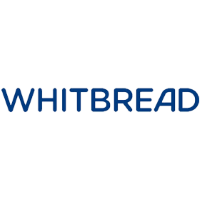|
**Haftungsausschluss: Der Text wurde mit Hilfe einer KI zusammengefasst und übersetzt. Für Aussagen aus dem Originaltext wird keine Haftung übernommen!**
**Zusammenfassung**
Dieser Artikel analysiert Whitbread (LON: WTB) als potenzieller „Multi-Bagger“ – ein Wertpapier, das voraussichtlich deutliche Renditen erzielen wird. Die Kernstrategie besteht darin, Unternehmen mit steigendem Return on Capital Employed (ROCE) zu identifizieren. ROCE misst, wie effektiv ein Unternehmen seinen eingesetzten Kapital nutzt, um Gewinn zu erzielen.
Der wichtigste Erkenntnis für Whitbread ist ein steigender ROCE, kombiniert mit einer stabilen Basis des eingesetzten Kapitals. Derzeit beträgt Whitbreads ROCE 6,7 % – leicht unter dem Branchenmittel von 7,2 %. Wichtig ist, dass das Unternehmen fünf Jahre zuvor Verluste erlitten hat und nun profitabel ist. Die eingesetzte Kapitalmenge ist relativ stabil geblieben. Dies deutet darauf hin, dass frühere Investitionen sich auszahlen oder das Unternehmen effizienter arbeitet.
Es wird jedoch gewarnt, dass ein konsistent hoher ROCE eine kontinuierliche Neugewinnung erfordert. Ein langfristiger Multi-Bagger benötigt es, um weiterhin mit hohen Renditen zu investieren. Obwohl Whitbreads aktueller ROCE positiv ist, hat der Aktienkurs in den letzten fünf Jahren nur 2,8 % an Wert für die Aktionäre gebracht, was darauf hindeutet, dass es möglicherweise noch keine außergewöhnlichen Wachstumsraten gibt.
Das Unternehmen ermutigt zu einer weiteren Untersuchung von Whitbread, insbesondere wenn man die möglichen zukünftigen Wachstumsgelegenheiten berücksichtigt. Es betont auch die Bedeutung der Verfolgung von Branchentrends und der Berücksichtigung von Analystenprognosen. Schließlich weist das Unternehmen darauf hin, dass ein potenzielles Risiko identifiziert wurde und bietet eine Liste von Unternehmen mit deutlich höheren ROE an.
---
Do you need any adjustments to the translation, or would you like me to provide it in another language? |



